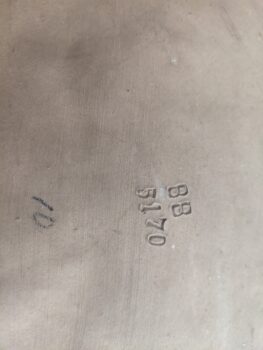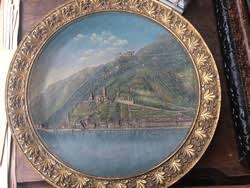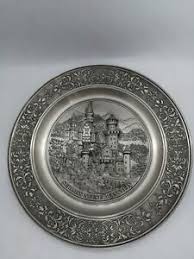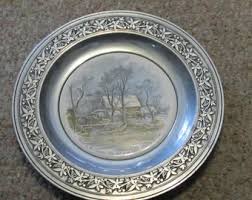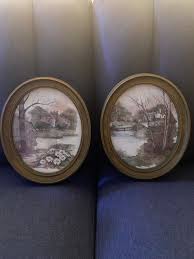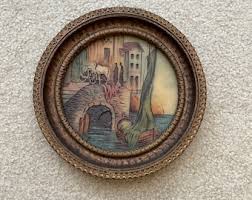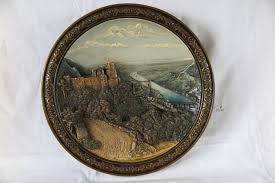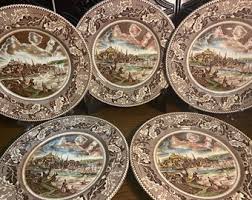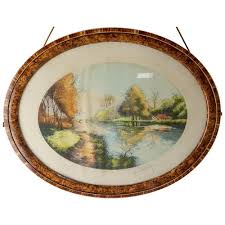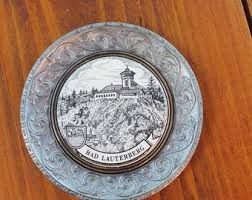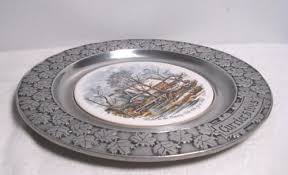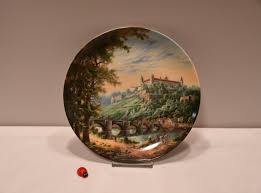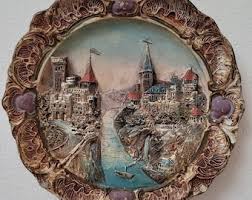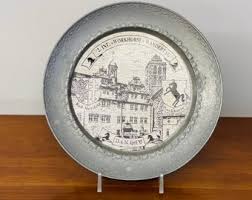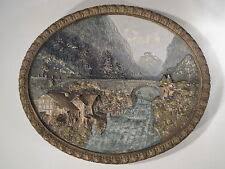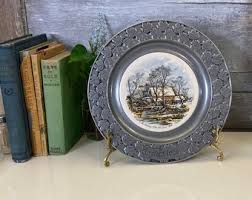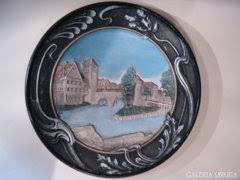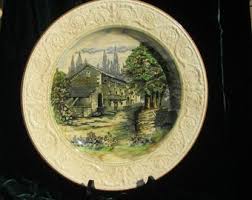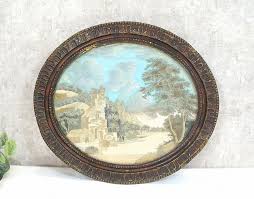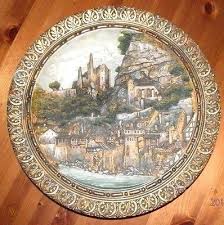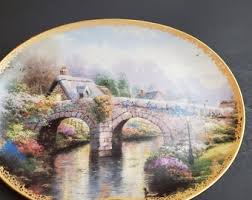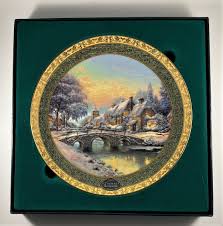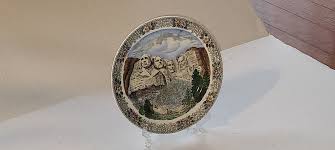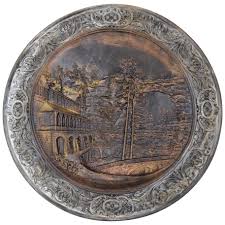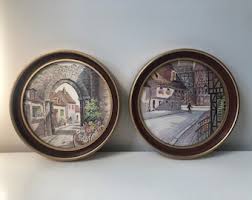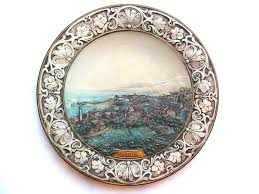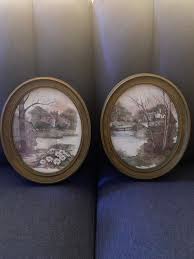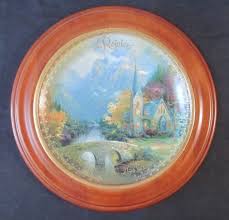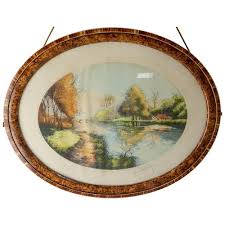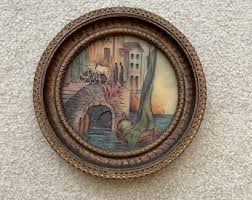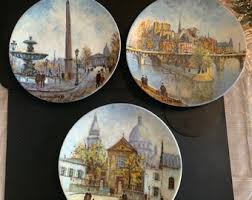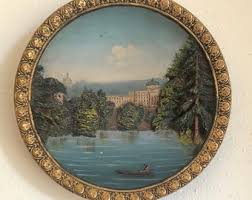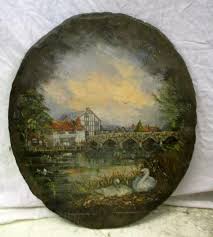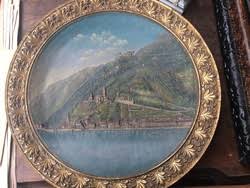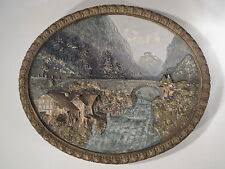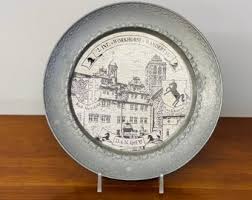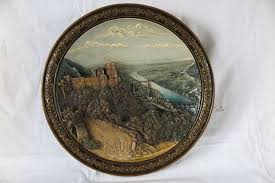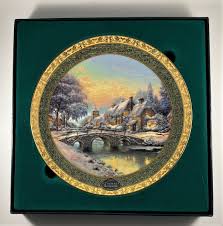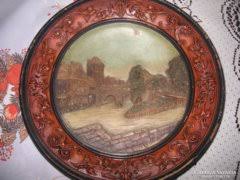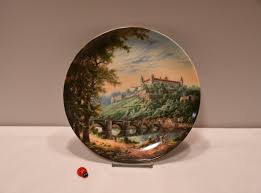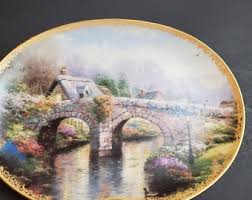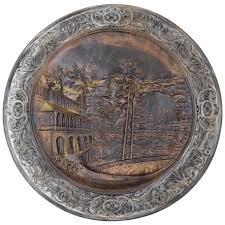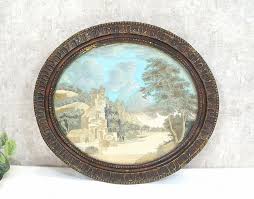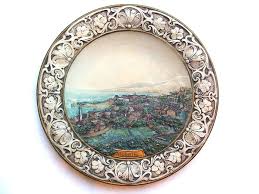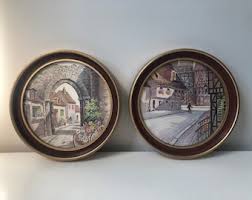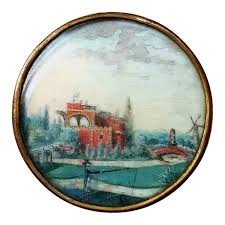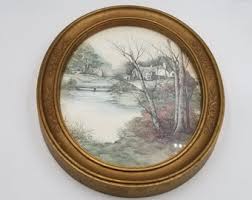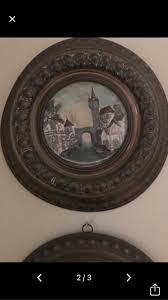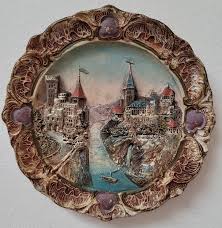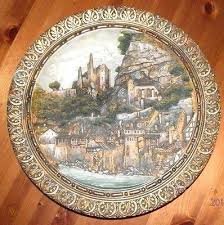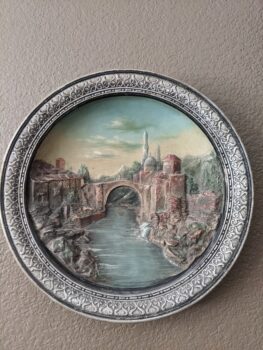I inherited this 3D plate from my great grandmother, she received it as a wedding gift in Russia, wedding was around 1920 but I can figure out the exact year (I have 2 of them, different designs). There is not an author anywhere I can see, just numbers on the back.
A 3D Relief Pottery Decorative Plate from circa late 19thC Attributed to The Cambrian Pottery founded by Thomas Rothwell
This report is designed to provide a professional appraisal of the specific item requested. It contains a detailed description and evaluation of the item, as well as information about the valuation method used. The value given in this appraisal report is applicable only to the item in question and should not be interpreted as a general valuation for any similar items. Values for similar items can vary significantly, ranging from one hundred to one hundred thousand US dollars, depending on subtle details.
This report is intended to give the owner an appraisal of their item’s value, whether it is furniture, china, glassware, or any other type of antique or collectible item. The information provided will help the owner to understand their piece and its value. Furthermore, it provides an appraisal value in US dollars, as well as advice on how to proceed if the owner wishes to sell the item. It should be noted that this report is not intended to encourage the owner to sell their antique item; instead, it seeks to provide information on its value so that the owner can make an informed decision.
Description, identification, provenance reconstruction, age estimation, style and similar items used for comparison.
This is A 3D Relief Pottery Decorative Plate from circa late 19thC Attributed to The Cambrian Pottery founded by Thomas Rothwell.
Identification
To identify a 3D Relief Pottery Decorative Plate from circa late 19thC Attributed to The Cambrian Pottery founded by Thomas Rothwell, look for a plate with a deep relief molded pattern. These plates are usually white with a glossy finish and the relief often features a raised border around the edge. The center of the plate usually features a detailed pattern such as a landscape, animals, or a crest. The maker’s mark is usually stamped on the back of the plate and includes the name “Cambrian Pottery” along with the founder’s name “Thomas Rothwell”. Additionally, the plate may have a date stamp to indicate when it was made.
In this case we only have a maker’s mark on the bottom that corresponds to the serial number of this plate.
Provenance
The provenance of A 3D Relief Pottery Decorative Plate from circa late 19thC Attributed to The Cambrian Pottery founded by Thomas Rothwell can be traced back to the pottery’s founding in 1764 by William Coles. In 1811, Dillwyn & Co. took over the company, producing the renowned ‘Swansea Porcelain’. Thomas Rothwell, Thomas Pardoe and Thomas Baxter were among the many talented artists who worked at the pottery in the 19th century. The pottery closed in 1870 and the site was sold to Cory, Yeo & Co.
Age
This plate was made circa 1850-1870.
Style
The style of the plate is a 3D Relief Pottery Decorative Plate from circa late 19thC. The plate features a deep relief molded pattern, usually with a raised border around the edge. The center of the plate typically features a detailed landscape, such as the building, river and city landscape shown on this plate. The design is typically white with a glossy finish and the maker’s mark is usually stamped on the back.
Similar Items Used for Comparison Purposes
Comparable sales information, including prices realized at recent auctions or private sales of similar items
In order to provide an up-to-date estimate of the fair market value for the item, I utilized the data collected, including auction prices, private sale prices, and other relevant market information. This is crucial as it can be used in various contexts such as insurance, estate planning, and art market analysis. It also offers a valuable insight into how the valuation of the item may have changed due to environmental or economic factors.
The auction prices and private sale prices were a significant factor in determining the current market value of the item, as they are based on actual transactions between buyers and sellers in the market. As such, they are a strong indicator of the expected value of the piece in the near future. By analyzing auction results and private sale prices from the last 6 months, I was able to accurately determine the current fair market value of the item.
This approach provides a comprehensive view of how the value has changed over time and gives insight into any potential areas of appreciation or depreciation in its price. Additionally, it allows me to adjust my valuation as new auction prices and private sale prices become available.
Conclusion
This plate is considered valuable because it is an original piece of artwork from a renowned pottery. The Cambrian Pottery, founded by William Coles in 1764, is known for its high-quality pottery and some of the best artists of the time, such as Thomas Rothwell, Thomas Pardoe and Thomas Baxter. Furthermore, this plate was created during the late 19th century, when the pottery was at the height of its popularity. The detail and craftsmanship of the plate, combined with its age and rarity, make it a highly valuable piece.
Appraisal Value ($)
$150-200 each.
Appraisal Report made by:
Andrés Gómez
BSc, MSc, Expert Art Appraiser
10+ years of experience in online antique and collectible appraisals.
100k+ Customers Served.
Antique Store Owner.
You can check my portfolio of past appraisals here:
https://www.appraisily.com/andres-portofolio/
Signature:

We have Experts online now.
Pictures received.
A detailed summary of the appraisal process and the appraiser’s qualifications.
Mark-to-market appraisal is a vital method for determining the current value of an item. This form of valuation requires an appraiser to consider various factors, such as market conditions, the condition and age of the item, and its rarity. By taking all these elements into account, a mark-to-market appraisal delivers an accurate assessment of an item’s current market value.
The item’s rarity, as determined by its availability and demand, is also considered in mark-to-market appraisal. Appraisers use this information to determine if the value of a piece is likely to increase or decrease over time. Additionally, they will inspect the condition of the item and note any signs of wear or damage that might affect its future resale value.
When performing mark-to-market appraisals, appraisers also consider market conditions by researching current market trends and comparable items that have recently sold. This information is used to provide an estimate of an item’s worth at that point in time. By considering all of these factors, mark-to-market appraisal is able to give a reliable indication of the current value of an item. This kind of valuation can also ensure fair prices are paid and received when buying or selling items.
In summary, mark-to-market appraisal is a crucial tool for determining the true value of an item, enabling buyers, sellers, and appraisers to make informed decisions regarding its worth. It takes into account multiple aspects to provide an accurate assessment of the current market value of an item. This information can be used to ensure that buyers and sellers are getting a fair price for the item, and that the appraiser’s valuation is up-to-date and reflective of current market conditions.
In the case of insurance replacement appraisals, mark-to-market appraisals can also be used to accurately estimate the cost of replacing a lost or damaged item. The current value, as determined by the appraisal, is then used to determine the amount that the insurance company will pay back to the policyholder. This way, policyholders can rest assured that they will receive an appropriate sum for any item that needs to be replaced due to accidental damage or theft. Additionally, this kind of valuation helps insurers ensure they are not being overcharged when items need to be replaced as part of a claim settlement.
The appraisal process is a thorough evaluation of the item or items in question. It involves researching and analyzing the information provided by the requester in order to provide an accurate estimate of its value. The appraiser takes into account factors such as condition, rarity, demand, and market prices. Photographs and detailed descriptions are especially important when providing an appraisal, since they help the appraiser identify any potential flaws or defects that could affect the item’s worth. By using all the resources that are available, an evaluation can be done quickly, efficiently, and with a high level of accuracy.
A statement of the appraiser’s liability and any potential conflicts of interest.
A qualified appraisal, also known as a formal written evaluation, is a professional assessment of the monetary value of an item by an individual who has specialized knowledge, expertise, and training in the field of appraisals. This person must meet certain educational and professional requirements, including experience in researching and evaluating items, as well as knowledge of the market and current market trends. The purpose of a qualified appraisal is to provide an objective and unbiased opinion of the value of an item for various purposes, including insurance claims, tax planning, estate planning, or to help determine a fair price for a sale or purchase.
We are committed to providing our clients with the most accurate and unbiased appraisal reports. To ensure impartiality, we adopt a flat rate, fixed fee structure for all appraisals, instead of a percentage-based fee. This eliminates any potential conflicts of interest between the appraiser and the final report value. Our appraisal reports are in compliance with the Appraisal Foundation’s USPAP (Uniform Standards of Professional Appraisal Practice) standards and guidelines, which are widely accepted as the ethical and performance standards for appraisers. This guarantees that our reports are of high quality and legally defensible.
